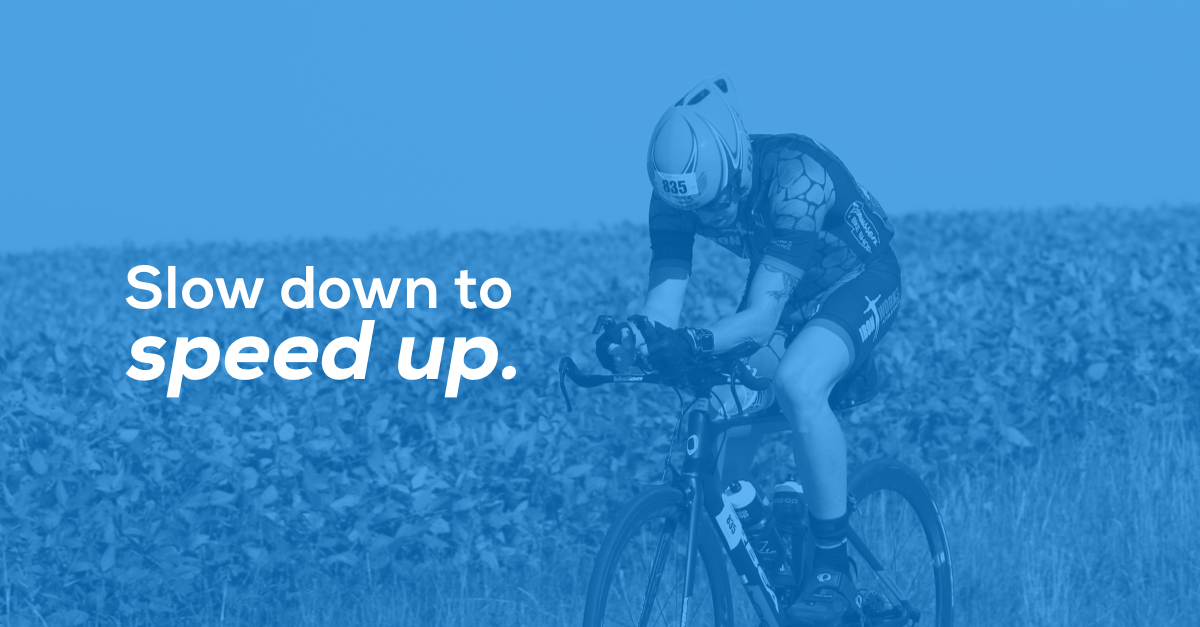The Key to Going Faster? . . . Slowing Down
There are many ingredients to a successful race day performance, but one of the most important is patience.
We live in a world where most things are available instantaneously. Waiting is about as archaic as brick phones these days. We want it all and we want it now, plus if it comes in a pill its even better. Don’t get me wrong, there is nothing wrong with wanting to improve. In fact, I believe that all of us, even the best of the best, are capable of great progress. The issue arises when we try to progress too quickly. The human body is designed to adapt to the stress it is placed under, but it adapts over time.
Training Peaks, the software I use for my training plans and coaching clients, has distilled the research on how the body adapts to training loads into a few simple formula. The one that concerns us today is your overall fitness load. This is a moving average of your daily workouts for the last six weeks of training. Six weeks! Therefore pushing yourself to improve is only as good as your ability to push yourself for weeks at a time. Trying to give 110% in a workout is actually counterproductive if you can’t keep training in the following days.
Fortunately, the philosophy that I subscribe to is going slow in order to go fast. Many athletes try to push the pace on easy days thinking that this makes them even more motivated and hard working, when slowing down allows for more consistent training. Having the patience to swim with paddles and focus on form, or ride at 65% for 4 hours, or run at an effort that is well below your capacity can feel painfully slow, but it is well worth it. When you have patience to train like this, over time the workouts become easier and easier because you’re not only putting in a consistent base, but you’re also increasing the quantity of your capillaries within your muscles. Your ability to transport oxygen to your muscles increases and with it, your ability to push at a higher intensity.
Once we get to the big day, we might want finish faster by pushing hard early on in the race, but this comes at a high price. Having the patience to stick to our planned power and paces when it feels slow is what helps us finish strong instead of staggering across the finish.
Hope this gives you some food for thought.
Happy training,
Coach Griffin

